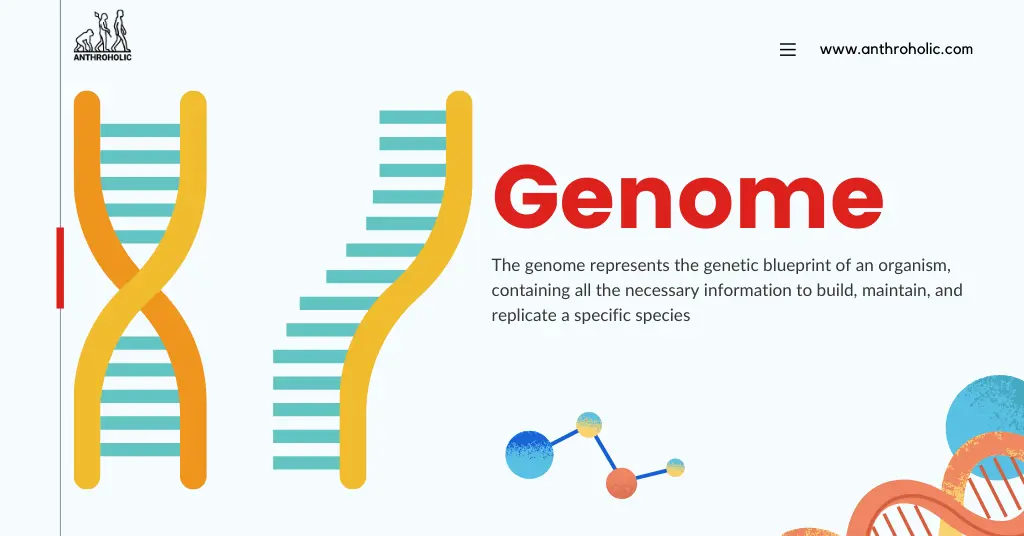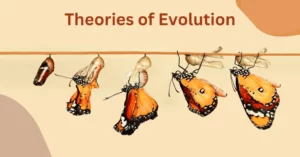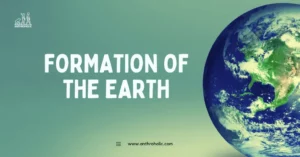AI Answer Evaluation Platform Live Now. Try Free Answer Evaluation Now
Genome
The genome represents the genetic blueprint of an organism, containing all the necessary information to build, maintain, and replicate a specific species [1]. Biological anthropology, which studies human biology and evolution, benefits significantly from studying genomes. This field allows for an exploration of human ancestry, population migration patterns, adaptation to different environments, and susceptibility to diseases [2].

What is a Genome?
A genome is the complete set of genes or genetic material present in a cell or organism. The human genome, for instance, is composed of approximately 3.1 billion base pairs housed within 23 pairs of chromosomes [3].
| Feature | Quantity |
|---|---|
| Base Pairs | ~3.1 billion |
| Chromosome Pairs | 23 |
| Protein-coding Genes | ~20,000 to 25,000 |
Each genome contains regions that code for proteins (protein-coding genes), and also regions with other essential roles like regulatory functions [4].
The Structure of the Genome
The building blocks of a genome are DNA (deoxyribonucleic acid) molecules. DNA comprises four chemical bases – adenine (A), guanine (G), cytosine (C), and thymine (T) – which pair up to form the iconic double helix structure [5].
Each base pair, formed by the pairing of two nucleotides, contributes to the formation of genes. A gene can vary in length from a few hundred DNA base pairs to more than two million [6].
Importance in Biological Anthropology
Studying the genome has several implications for the field of biological anthropology:
- Evolutionary Insights: Genomic analyses can provide insight into human evolution. By comparing the human genome with those of other species, we can trace back common ancestors and identify genetic divergences [7].
- Population Migration: The genome can record evidence of ancient human migrations. By tracing common genetic markers, researchers can construct a map of how our ancestors moved around the globe [8].
- Genetic Adaptations: Genomic research also illuminates how humans have genetically adapted to diverse environments and lifestyles. For example, understanding lactose tolerance’s genetic underpinnings has helped anthropologists understand agricultural societies’ evolution [9].
- Disease Susceptibility: Genetic variations can influence the risk of diseases. Understanding these variations can provide insights into population-specific health issues, an area of particular interest to medical anthropologists [10].
The Human Genome Project
The Human Genome Project (HGP) was a groundbreaking international research endeavor conducted between 1990 and 2003. The project’s primary goal was to map the entire human genome, which has had profound implications for biological anthropology and beyond [11].
Key accomplishments of the HGP include:
- Determining the sequence of the 3 billion DNA molecules in the human genome.
- Identifying approximately 20,000-25,000 genes in human DNA.
- Storing this data in databases for easy access.
- Improving tools for data analysis.
- Addressing the ethical, legal, and social issues (ELSI) that may arise from the project.
Conclusion
Genomic research’s potential applications are vast and diverse, influencing many sectors, from healthcare to anthropology. By studying genomes, we can gain a deeper understanding of our past, our relationships with other species, and the health challenges we may face in the future.
References
[1] Matt Ridley. “Genome: The Autobiography of a Species in 23 Chapters.” HarperCollins, 2006.
[2] Marks, Jonathan. “The Alternative Introduction to Biological Anthropology.” Oxford University Press, 2010.
[3] Collins, Francis S., et al. “Finishing the euchromatic sequence of the human genome.” Nature, vol. 431, no. 7011, 2004, pp. 931–945.
[4] Strachan, Tom, and Andrew Read. “Human Molecular Genetics.” Garland Science, 2010.
[5] Watson, J. D., and Crick, F. H. C. “Molecular structure of nucleic acids: a structure for deoxyribose nucleic acid.” Nature, vol. 171, no. 4356, 1953, pp. 737–738. https://doi.org/10.1038/171737a0
[6] Alberts, Bruce, et al. “Molecular Biology of the Cell.” Garland Science, 2008.
[7] Dawkins, Richard. “The Ancestor’s Tale: A Pilgrimage to the Dawn of Evolution.” Houghton Mifflin Harcourt, 2004.
[8] Cavalli-Sforza, Luigi Luca. “Genes, Peoples, and Languages.” North Point Press, 2001.
[9] Gerbault, Pascale, et al. “Evolution of lactase persistence: an example of human niche construction.” Philosophical Transactions of the Royal Society B: Biological Sciences, vol. 366, no. 1566, 2011, pp. 863–877.
[10] Bamshad, Michael, and Steve E. Olson. “Mapping Human History: Discovering the Past Through Our Genes.” Beacon Press, 2003.
[11] Collins, Francis S., et al. “The Human Genome Project: Lessons from Large-Scale Biology.” Science, vol. 300, no. 5617, 2003, pp. 286–290.

![The Cambrian Period, roughly 541 to 485.4 million years ago, marks a significant era in the history of life on Earth[1]. During this time, a remarkable explosion of diversity occurred, with the first appearance of many multicellular organisms and early forms of many major groups of animals alive today.](https://anthroholic.com/wp-content/uploads/2023/08/Cambrian-Era-in-Geological-Time-Scale-in-Archaeology-300x157.webp)


